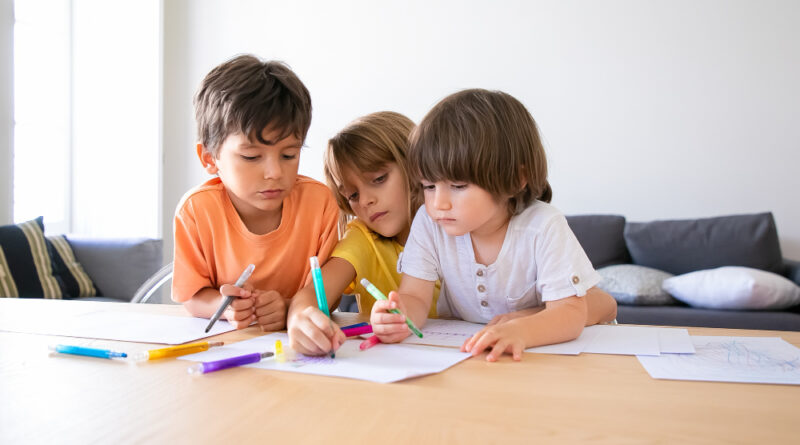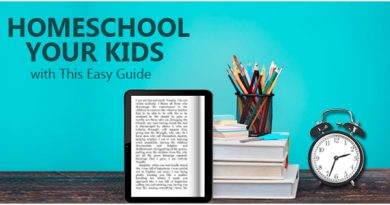The Importance of Printable Worksheets in Early Childhood Education
Introduction
Definition and Overview
Printable worksheets are educational resources that can be printed and used as tools for teaching various subjects and skills. These worksheets are designed to provide structured activities that enhance learning through repetition, practice, and engagement. In the context of early childhood education, printable worksheets play a crucial role in helping young learners develop foundational skills in a fun and interactive way.
Importance of Early Childhood Education
Early childhood education is a critical period in a child’s development, typically covering the ages from birth to eight years old. During this time, children undergo rapid growth and development, laying the groundwork for their future learning and life skills. High-quality early childhood education programs can have a significant impact on a child’s cognitive, social, emotional, and physical development, setting the stage for lifelong success.
Role of Printable Worksheets
Printable worksheets serve as valuable tools in early childhood education by providing structured, engaging activities that support various areas of learning. These worksheets can be tailored to meet the specific needs of young learners, making them an essential component of any early childhood education program. By incorporating printable worksheets into their teaching strategies, educators can create a well-rounded and effective learning experience for their students.
Benefits of Printable Worksheets in Early Childhood Education
Enhancing Cognitive Skills
Printable worksheets are designed to challenge and stimulate young minds, helping children develop critical cognitive skills. Activities such as puzzles, matching games, and problem-solving tasks encourage logical thinking, pattern recognition, and memory retention. These cognitive skills are foundational for academic success and are essential for a child’s overall development.
Improving Fine Motor Skills
Many printable worksheets require children to perform tasks that involve hand-eye coordination and precise movements, such as tracing letters, cutting shapes, and coloring within the lines. These activities help improve fine motor skills, which are crucial for tasks like writing, drawing, and manipulating small objects. Developing fine motor skills in early childhood sets the stage for more complex physical tasks later in life.
Encouraging Creativity and Imagination
Printable worksheets often include activities that encourage children to use their creativity and imagination. Art and craft worksheets, for example, allow children to experiment with colors, shapes, and designs, fostering a sense of creativity and self-expression. Creative activities are vital for developing problem-solving skills and nurturing a child’s ability to think outside the box.
Supporting Literacy and Numeracy
Early literacy and numeracy skills are critical components of early childhood education. Printable worksheets focused on letters, words, numbers, and basic mathematical concepts provide young learners with opportunities to practice and reinforce these essential skills. By engaging in activities such as letter tracing, word matching, counting, and simple arithmetic, children build a strong foundation for future academic success.
Promoting Independence and Confidence
Using printable worksheets can help children develop a sense of independence and confidence in their abilities. Completing worksheets on their own allows children to take ownership of their learning and feel a sense of accomplishment. This boost in self-esteem can encourage children to tackle more challenging tasks and foster a positive attitude toward learning.
Types of Printable Worksheets
Literacy Worksheets
Literacy worksheets are designed to help children develop reading and writing skills. These worksheets may include activities such as letter recognition, phonics exercises, word matching, and simple sentence construction. By engaging in these activities, children can improve their vocabulary, reading comprehension, and writing abilities.
Numeracy Worksheets
Numeracy worksheets focus on developing mathematical skills in young learners. Activities may include number recognition, counting, basic addition and subtraction, shape identification, and pattern recognition. These worksheets help children build a strong foundation in numeracy, which is essential for more advanced mathematical concepts.
Science and Nature Worksheets
Science and nature worksheets introduce children to basic scientific concepts and the natural world. Activities may include sorting and classifying objects, exploring the properties of materials, learning about plants and animals, and simple experiments. These worksheets encourage curiosity and a love of exploration, laying the groundwork for future scientific learning.
Art and Craft Worksheets
Art and craft worksheets provide opportunities for children to express their creativity and develop fine motor skills. Activities may include coloring, drawing, cutting and pasting, and creating simple crafts. These worksheets help children explore different artistic techniques and materials, fostering a love for art and creativity.
Social Studies Worksheets
Social studies worksheets introduce young learners to concepts related to community, culture, history, and geography. Activities may include map reading, learning about different cultures, understanding community roles, and exploring historical events. These worksheets help children develop an understanding of the world around them and their place in it.
Emotional and Social Development Worksheets
Emotional and social development worksheets focus on helping children understand and manage their emotions, build social skills, and develop empathy. Activities may include identifying and expressing feelings, role-playing social scenarios, and learning about kindness and cooperation. These worksheets support children’s emotional well-being and social competence.
Designing Effective Printable Worksheets
Key Elements to Include
Effective printable worksheets should include clear instructions, engaging content, and age-appropriate challenges. It’s important to ensure that the activities are aligned with the learning objectives and provide opportunities for practice and reinforcement. Visual aids, such as images and diagrams, can enhance understanding and engagement.
Age-Appropriate Content
When designing printable worksheets, it’s crucial to consider the developmental stage of the target age group. Activities should be tailored to the abilities and interests of the children, ensuring that they are neither too easy nor too difficult. Age-appropriate content helps maintain children’s interest and motivation to learn.
Visual Appeal and Engagement
Printable worksheets should be visually appealing and engaging to capture children’s attention. Bright colors, fun illustrations, and interactive elements can make the worksheets more enjoyable and interesting. Incorporating a variety of activities can also keep children engaged and motivated to complete the tasks.
Incorporating Educational Standards
To ensure that printable worksheets are effective educational tools, they should align with educational standards and curriculum guidelines. This alignment ensures that the activities support the learning goals and objectives set by educators and provide a comprehensive learning experience.
Differentiated Learning Opportunities
Printable worksheets should offer differentiated learning opportunities to cater to the diverse needs of young learners. This can include providing activities at different levels of difficulty, offering choices in how tasks are completed, and including extension activities for children who need additional challenges. Differentiated learning helps ensure that all children can benefit from the worksheets.
Implementing Printable Worksheets in the Classroom
Strategies for Effective Use
To maximize the benefits of printable worksheets in the classroom, educators should use them strategically. This can include incorporating worksheets into daily routines, using them for specific skill practice, and integrating them into larger projects and activities. It’s important to ensure that worksheets are used in a balanced and purposeful way, rather than relying on them as the sole method of instruction.
Integrating with Lesson Plans
Printable worksheets can be seamlessly integrated into lesson plans to support and reinforce learning objectives. Educators can use worksheets as introductory activities, practice exercises, or assessments to gauge student understanding. By aligning worksheets with lesson plans, educators can create a cohesive and comprehensive learning experience.
Balancing Worksheets with Hands-On Activities
While printable worksheets are valuable tools, it’s important to balance their use with hands-on activities. Hands-on experiences, such as experiments, interactive games, and group projects, provide opportunities for experiential learning and help children develop practical skills. A balanced approach ensures that children receive a well-rounded education.
Adapting for Diverse Learners
Printable worksheets should be adapted to meet the diverse needs of learners in the classroom. This can include providing additional support for children with learning difficulties, offering more challenging tasks for advanced learners, and incorporating culturally relevant content. Adapting worksheets ensures that all children can access and benefit from the activities.
Assessing Student Progress
Printable worksheets can be used as assessment tools to monitor student progress and identify areas for improvement. Educators can use completed worksheets to evaluate children’s understanding of specific concepts and skills. Regular assessment helps educators tailor instruction to meet the needs of their students and track their development over time.
Printable Worksheets for Home Use
Involving Parents in Early Education
Printable worksheets can be valuable resources for involving parents in their child’s early education. Parents can use worksheets to support and reinforce the learning that takes place in the classroom, providing additional practice and enrichment activities at home. By involving parents, educators can create a supportive learning environment that extends beyond the classroom.
Creating a Conducive Learning Environment at Home
For printable worksheets to be effective at home, it’s important to create a conducive learning environment. This can include setting up a quiet, well-lit workspace, establishing a regular routine for completing worksheets, and providing necessary materials and resources. A positive and structured environment helps children stay focused and motivated to learn.
Customizing Worksheets for Home Learning
Printable worksheets can be customized to meet the specific needs and interests of children at home. Parents can choose worksheets that align with their child’s learning goals and preferences, providing targeted practice in areas that need improvement. Customization ensures that the worksheets are relevant and engaging for the child.
Monitoring and Supporting Child’s Progress
Parents can use printable worksheets to monitor their child’s progress and provide support as needed. By reviewing completed worksheets and discussing the activities with their child, parents can gain insights into their child’s strengths and areas for improvement. Providing positive feedback and encouragement helps children stay motivated and confident in their learning.
Challenges and Considerations
Potential Overreliance on Worksheets
While printable worksheets are valuable tools, it’s important to avoid overreliance on them. Excessive use of worksheets can lead to a passive learning experience and limit opportunities for hands-on, experiential learning. Educators and parents should strive to use worksheets as one part of a balanced and varied approach to education.
Ensuring Variety in Teaching Methods
To keep children engaged and motivated, it’s important to use a variety of teaching methods. This can include combining worksheets with interactive activities, games, technology, and real-world experiences. A diverse range of teaching methods helps cater to different learning styles and keeps the learning experience dynamic and exciting.
Addressing Individual Learning Needs
Printable worksheets should be designed to address the individual learning needs of each child. This can include providing differentiated activities, offering choices in how tasks are completed, and incorporating scaffolding and support as needed. Addressing individual needs ensures that all children can benefit from the worksheets and achieve their learning goals.
Keeping Worksheets Updated and Relevant
To ensure that printable worksheets remain effective, they should be regularly updated and aligned with current educational standards and practices. This can include incorporating new content, revising activities based on feedback, and ensuring that worksheets reflect current knowledge and trends. Keeping worksheets updated helps maintain their relevance and effectiveness.
Balancing Screen Time and Printable Activities
In today’s digital age, it’s important to balance screen time with printable activities. While digital resources offer valuable learning opportunities, printable worksheets provide a tactile and hands-on experience that can be beneficial for young learners. Balancing screen time with printable activities ensures a well-rounded and holistic approach to education.
Conclusion
Recap of Key Points
Printable worksheets are valuable tools in early childhood education, offering a range of benefits including enhancing cognitive skills, improving fine motor skills, encouraging creativity, and supporting literacy and numeracy. By providing structured, engaging activities, printable worksheets help children develop foundational skills and foster a love for learning.
Future Trends in Early Childhood Education
As education continues to evolve, the use of printable worksheets is likely to remain a key component of early childhood education. Future trends may include the integration of technology with printable resources, the development of more interactive and customizable worksheets, and a continued focus on differentiated learning and individualized instruction.
Final Thoughts on Printable Worksheets
In conclusion, printable worksheets play a crucial role in supporting early childhood education. When used effectively, they provide valuable opportunities for practice, reinforcement, and engagement. By incorporating printable worksheets into their teaching strategies, educators and parents can create a comprehensive and balanced learning experience that sets the stage for lifelong success.




